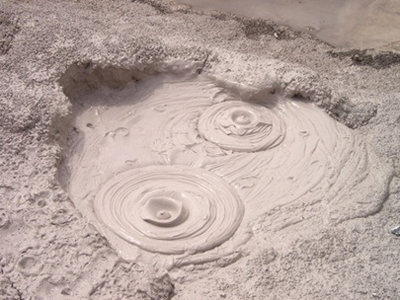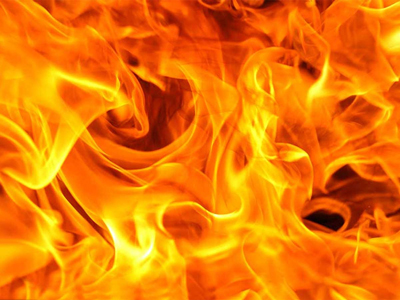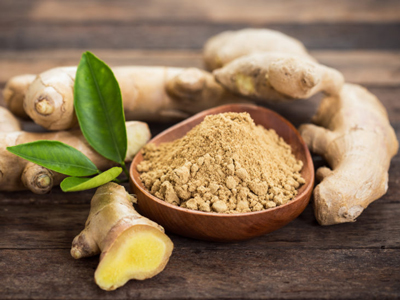AMA: The Antithesis of AGNI (1)
In Ayurveda, the concept of fire, or AGNI, is of central importance. In fact, the strength of AGNI in the body is among the most critical factors in determining overall health. By contrast, AMA is a toxic, disease causing substance that forms as a result of impaired AGNI, and that, in turn, destroys AGNI. In this way, impaired AGNI and the creation of AMA routinely enter into a vicious and self-perpetuating cycle.

Representation of AMA

Representation of AGNI
Unfortunately, the accumulation of AMA is extremely detrimental to our health; it can lead to all kinds of imbalances and is a causative factor in any number of diseases. As a result, understanding AMA as the antithesis of AGNI – learning what it is exactly, how to recognize it, how to rid the body of it, and how to kindle AGNI in its place – can be a very helpful step in the journey toward optimal health.
What is AMA?
AMA is a Sanskrit word that translates literally to mean things like “unripe,” “uncooked,” “raw,” “immature,” or “undigested.” Essentially, it is a form of un-metabolized waste that cannot be utilized by the body. To some degree, the formation of small amounts of AMA is a normal part of the digestive process, provided it is efficiently removed. But when it is not regularly cleared and eliminated, AMA becomes hugely problematic. In fact, AMA is said to be the root cause of all disease, and AMAYA, a Sanskrit word for disease literally means “that which is born out of AMA.” The connection between AMA and the disease process makes perfect sense because the qualities of AMA are in direct opposition to those of AGNI. And remember, strong AGNI is essential to the maintenance of proper health. In other words, when AGNI is compromised and when AMA accumulates, our health suffers, and the two situations are mutually reinforcing.
The qualities of AGNI and AMA illustrate their perfect opposition to one another.
AGNI is / AMA is:
• Hot / Cold;
• Sharp / Dull;
• Light / Heavy;
• Dry / Oily, Viscous, and Wet;
• Subtle / Gross;
• Clear / Sticky, Slimy;
• Spreading / Stable, Stagnant;
• Fragrant / Foul Smelling.
Is it Really That Bad?
AMA is fairly easy to clear from the digestive tract, but once it spreads into the deeper tissues, it becomes much more difficult to eliminate. As AMA accumulates in the body, it inevitably clogs the channels of the body (SROTAMSI) and disrupts tissue nutrition. This alone is problematic, but AMA can disturb physiological processes at the cellular level as well. When AMA finds its way into the deeper tissues, it coats and clogs individual cell membranes – inhibiting cellular communication and weakening the immune response. This eventually leads to a loss of intelligence at the cellular level, which can cause much more serious diseases such as autoimmune disorders, or cancer.
Signs and Symptoms of AMA
Generalized signs and symptoms of AMA in the body include:
• Clogging of the channels (may cause symptoms like sinus congestion, lymph congestion, constipation, fibrocystic changes, etc.);
• Fatigue;
• Heaviness;
• Abnormal flow of VATA (there are many ways this can manifest in the body, but examples include excess upward moving energy causing heartburn or excess downward moving energy causing diarrhea);
• Indigestion;
• Stagnation;
• Abnormal taste, muted taste, or poor appetite;
• Sexual debility;
• Mental confusion;
• Feeling unclean.
Depending on where AMA is in the body, it can cause more specific signs and symptoms such as a thick coating on the tongue, all kinds of congestion, loss of strength, dull eyes, skin blemishes, fevers, excess weight, poor circulation, edema and swelling, stiffness or inhibited movement, soreness at the roots of the hair, or generalized aches and pains. In the digestive tract, AMA tends to cause changes taste perception, loss of appetite, indigestion, malabsorption, vitamin and mineral deficiencies, bloating, gas, constipation, diarrhea, sticky stools, or itching at the anus. AMA is also often responsible for foul smelling breath, mucus, urine, and stools. Mentally and emotionally, AMA leads to a distinct lack of energy and enthusiasm, low self esteem, anxiety, worry, depression, fear of the unknown, a foggy mind, and unclear thinking.

Modern diseases that are a direct result of AMA accumulation include:
• Atherosclerosis;
• Candida albicans overgrowths;
• Elevated blood sugar;
• Blood urea;
• Late-onset diabetes;
• Gout;
• Some types of depression;
• Gall stones;
• Rheumatoid factor;
• Kidney stones;
• Elevated Immunoglobulin E;
• Increased liver enzymes;
• Helicopylori bacteria;
• Glaucoma;
• Leukocytosis;
• Fevers;
• Excess red blood cell count;
• Bacterial infections;
• Excess platelet count;
• Tumors.
The Causes of AMA
There are any number of reasons that AMA can begin to accumulate in the body, but impaired AGNI is always a piece of the puzzle. And because AMA itself disturbs AGNI, it can sometimes be difficult to tease out which came first. In reality, it doesn’t matter. Habits that disrupt AGNI can often be implicated in the formation of AMA. Likewise, habits that contribute to the formation of AMA will disturb AGNI. Here are some examples of such habits:
• A poor diet, which might involve:
– Overeating or emotional eating;
– Improper food combinations;
– Especially heavy food;
– Fried food;
– Excess amounts of cold or raw foods;
– Highly processed or sugary foods;
– An excess of the sweet, sour, or salty tastes.
• A detrimental lifestyle (e.g. high stress, excess or inadequate sleep, lack of routine, excessive or inadequate exercise, etc.);
• Irregular eating habits;
• Sleeping or eating before food is digested;
• Sleeping during the day (for some constitutions);
• Lack of exercise;
• Repressed or unresolved emotions.
In Ayurveda, removing the cause of an imbalance is always one of the first steps in the line of treatment. While the exact cause in your case may not be entirely obvious to you, an Ayurvedic practitioner can help you to identify and redirect any aspects of your life that may be compromising your health. In the mean time, the following suggestions will be helpful.
General Support for Digesting and Eliminating AMA
Fortunately, there are a number of ways to encourage the body to digest AMA and eliminate it from the body. The following strategies support the body’s natural, physiological detoxification process. Ultimately, they bolster the digestive capacity, improve tissue nutrition, and help to eliminate AMA via the urine, feces, and sweat.
Medicinal plants
Herbal support is often indicated when the AGNI is strong enough to produce an appetite, but not strong enough to completely digest the food, resulting in the formation of AMA. The bitter and astringent tastes are a powerful combination because the bitter taste dries and drains AMA, while the pungent taste destroys and digests it. This is a common flavor combination in herbs and formulas widely used to digest AMA.
Ayurveda reveres a surprising number of medicinal plants for their ability to digest and eliminate AMA. Often, they are the same herbs that are taken before meals to kindle the digestive fire, but they are taken after meals, in significantly larger doses. In this way, the medicinal plants themselves serve as a source of fuel to fan the impaired digestive fire. Obviously, the appropriate combination of AMA-reducing herbs depends on the context of each individual and should be determined by a qualified practitioner. Special care should be taken in cases of high PITTA or severe inflammatory conditions (e.g. ulcers) because medicinal plants that digest AMA also tend to be quite hot and can further aggravate the situation. It is also worth noting that many of these herbs are common household spices like fresh and dried ginger, cinnamon, nutmeg, mustard seed, garlic, cumin, black pepper, fennel, and coriander.

Sweating
Warming the body and inducing a gentle sweat thins AMA, loosens its grip on the tissues, and helps to move it toward the digestive tract, making it easier to eliminate. So whether this is accomplished with a gentle steam bath, a sauna, or appropriate exercise, sweating can be tremendously helpful. However, take care if PITTA is high, as too much heat and sweating can inadvertently aggravate PITTA and trigger additional imbalances.
Sun Bathing
While we certainly need to be particular about when and for how long our skin is exposed to direct sunlight, appropriate doses of sunlight increase lightness, kindle AGNI, and are especially good for certain types of eczema, psoriasis, arthritis, depression, and water retention. For some, just 10 minutes of morning or evening sunlight is enough; others can easily tolerate 40 minutes. Special care should be taken not to receive too much sun, and this is especially important in fair-skinned PITTA types, who will tolerate the least amount of sunlight.
Read the second part of this article
yogaesoteric
March 14, 2020
Also available in:
 Français
Français
